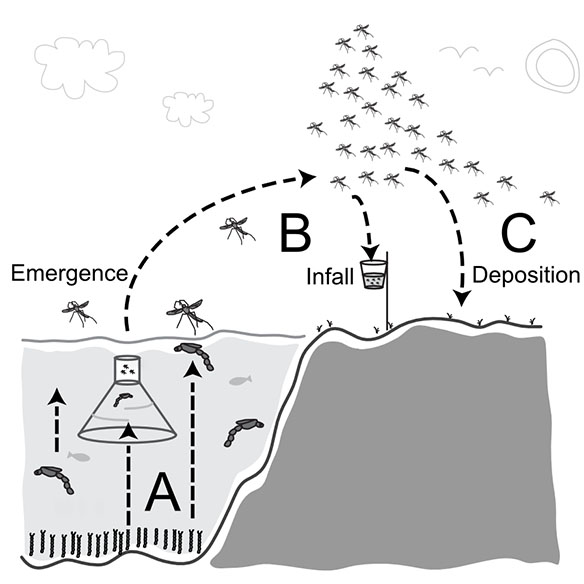
Ecological Archives E096-051-A2
Jamin Dreyer, Philip A. Townsend, James C. Hook III, David Hoekman, M. Jake Vander Zanden, and Claudio Gratton. 2015. Quantifying aquatic insect deposition from lake to land. Ecology 96:499–509. http://dx.doi.org/10.1890/14-0704.1
Appendix B. An illustration of the aquatic and terrestrial midge sampling scheme used to create our model.
Fig. B1. The aquatic and terrestrial midge sampling scheme used to create our model. Midges develop as larvae on the lake bottom. When they rise to the surface to emerge as adults submerged conical traps capture them for a per area estimate of midge emergence (A). Adults fly to land forming large mating swarms which are most dense close to the lake edge. Aerial infall traps placed at approximately 5, 50, 150, and 500 m from the lake edge were used to characterize relative midge abundance (B). Measurements of emergence and infall were combined to estimate the deposition of midges on the surrounding landscape as a function of distance from shore (C).